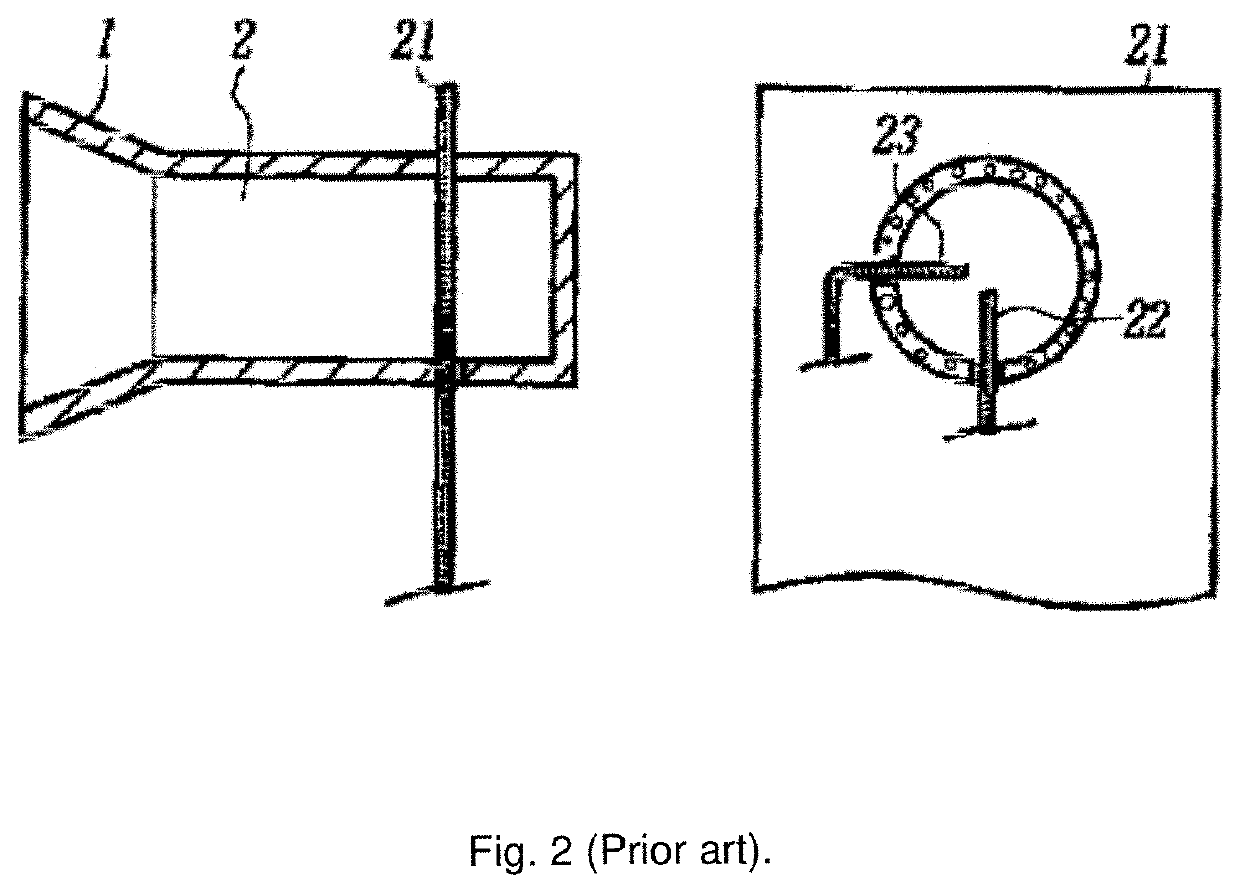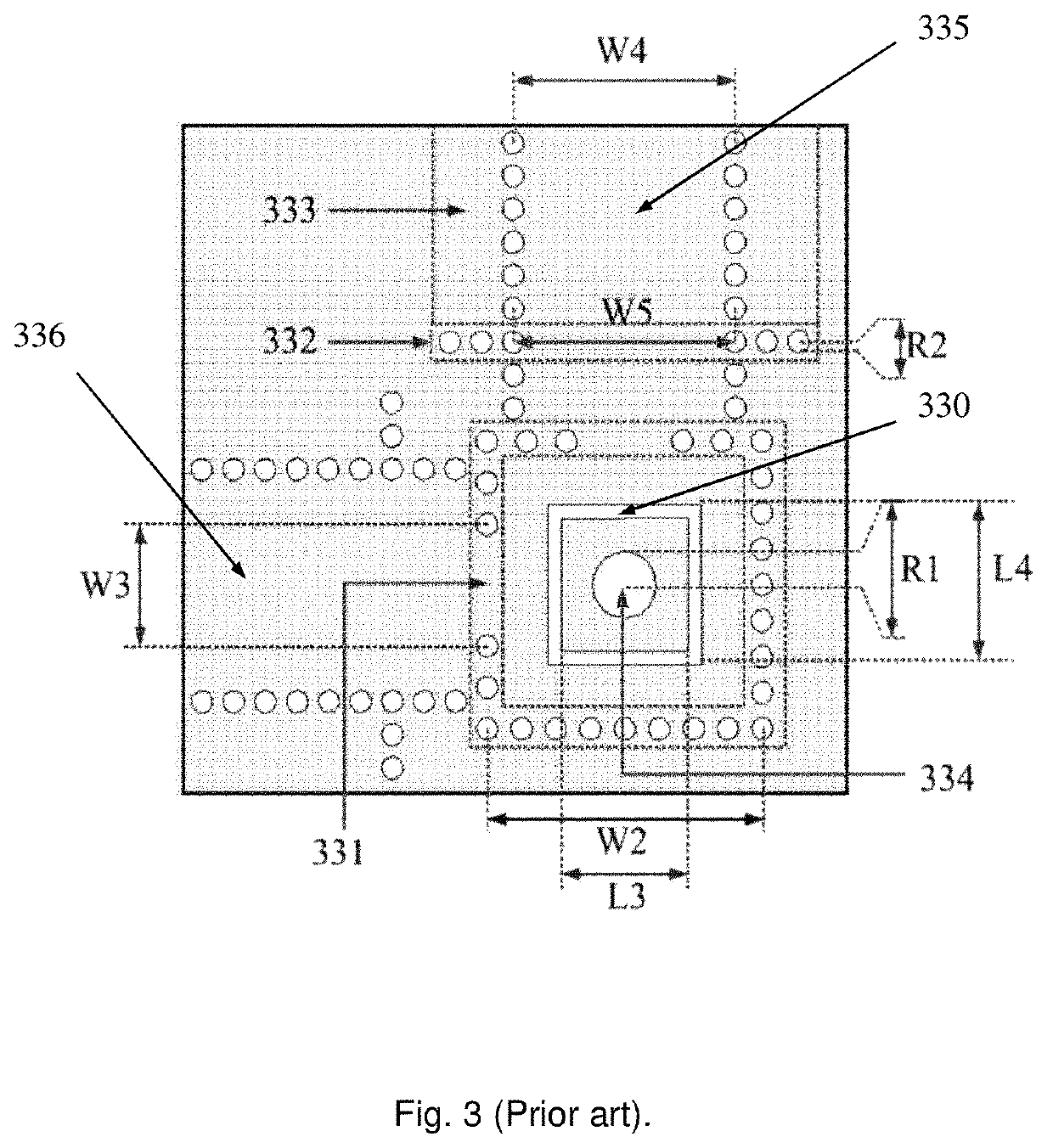Planar orthomode transducer
a transducer and orthomode technology, applied in the field of microwave devices, can solve the problems of large dimensions, high manufacturing cost, and difficulty in integrating such waveguide orthomode transducers into the microwave front-end of the transceiver device, and achieve the effects of improving polarization diversity, widening the operating frequency band, and reducing insertion losses
- Summary
- Abstract
- Description
- Claims
- Application Information
AI Technical Summary
Benefits of technology
Problems solved by technology
Method used
Image
Examples
Embodiment Construction
[0048]One embodiment of the present invention of a planar orthomode transducer is shown in FIG. 4. It comprises a substrate integrated resonator (1) with two substrate integrated waveguides (2) connected to the substrate integrated resonator (1), wherein the substrate integrated resonator (1) and the substrate integrated waveguides (2) are formed by a plurality of metallized via holes between two metallization layers (11) of a printed circuit board (10). The substrate integrated waveguide (2) is shown in FIG. 5. Metallized via holes connecting bottom and top metallization layers (11) of the printed circuit board (10) form sidewalls of the substrate integrated waveguides (2). Top and bottom metallization layers (11) of the printed circuit board (10) form top and bottom walls of the substrate integrated waveguides (2). Thus, substrate integrated waveguides (2) have dielectric filling that consists of the printed circuit board (10) substrate material. Operating principle of the substra...
PUM
| Property | Measurement | Unit |
|---|---|---|
| insertion loss | aaaaa | aaaaa |
| insertion loss | aaaaa | aaaaa |
| insertion loss | aaaaa | aaaaa |
Abstract
Description
Claims
Application Information
 Login to View More
Login to View More - R&D
- Intellectual Property
- Life Sciences
- Materials
- Tech Scout
- Unparalleled Data Quality
- Higher Quality Content
- 60% Fewer Hallucinations
Browse by: Latest US Patents, China's latest patents, Technical Efficacy Thesaurus, Application Domain, Technology Topic, Popular Technical Reports.
© 2025 PatSnap. All rights reserved.Legal|Privacy policy|Modern Slavery Act Transparency Statement|Sitemap|About US| Contact US: help@patsnap.com



